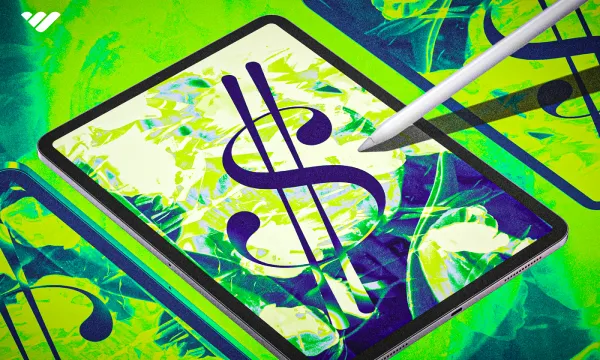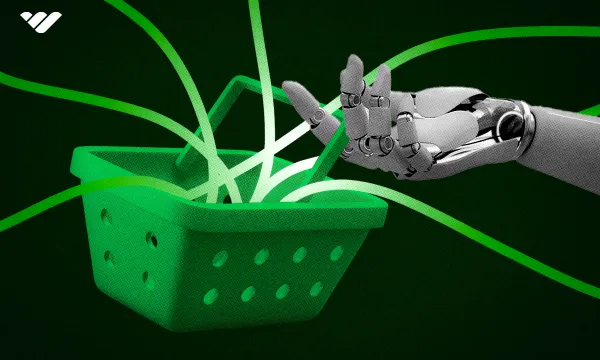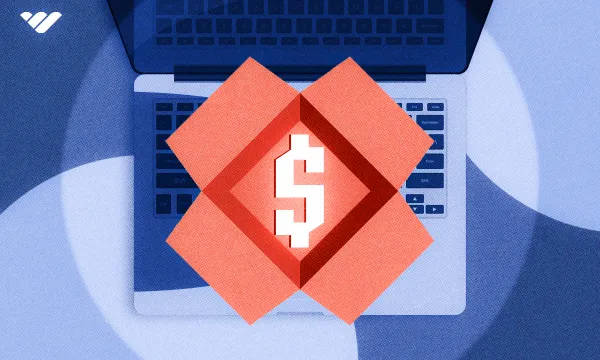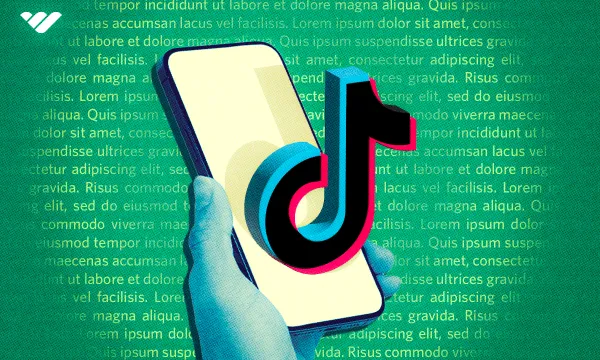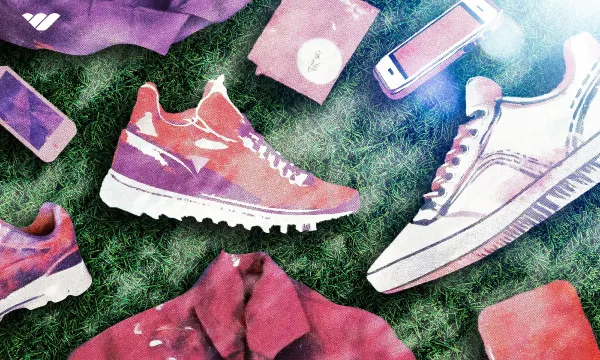Digital artists have so many options to share and sell their work. If you’ve got a passion for making things, why not make some money doing it? From selling your art on mugs and coasters to teaching others how to learn a skill, there are plenty of ways you can make money as a digital artist.
What is a Digital Artist?
A digital artist makes art on a computer. Instead of oil paints, brushes, and paper, digital artists use a mouse as their medium and screens as their canvas. The term digital art can refer to anything from video game design to lettering and paintings created in tools like Photoshop.
The good news for digital artists is that their work is replicable and scalable. Where it might take a watercolor artist days to create a handful of the same piece, it can take digital artists just seconds. This means you can reproduce and sell as many prints as you like to meet demand.
How Much Does a Digital Artist Make?
How long is a piece of string? The amount of money a digital artist can make varies wildly depending on their medium, their audience, and the kind of art they create. One digital artist might make millions selling a handful of prints online, while another might only make $50 a month.
To become a successful digital artist, you need a platform, an audience, and a plan. Don’t worry — in this piece, we’ll show you what your options are and how lucrative each option can be.
Is Selling Digital Art Profitable?
In short: it can be very profitable. In 2021, a pool of digital creators made a lot of money by jumping on the NFT bandwagon. While the buzz around this digital form of currency has died down, there are still plenty of artists making the big bucks. One digital artist has sold a single piece for $100,000, while another creator has sold over 3,000 Photoshop brushes.
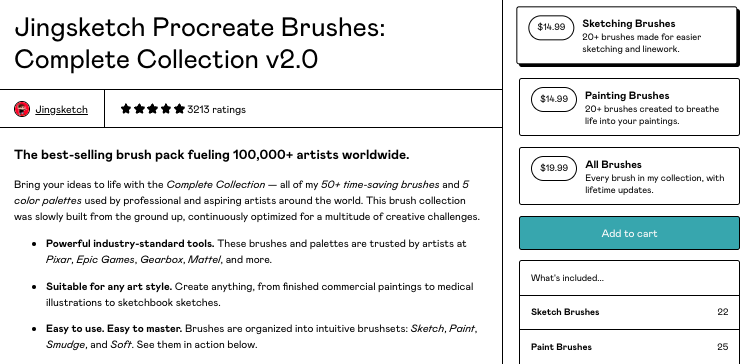
While these two examples are both digital artists, they’re making money in very different ways. And that’s the beauty of the internet — you can make money not just by selling your art online, but you can also share and monetize your skill in other ways.
13 Ways to Make Money as a Digital Artist
1. Sell Downloadable Prints
The most obvious option is to sell your art as downloadable prints. Once you’ve created a piece, you can sell it over and over again — the definition of passive income. You can either choose to print off each piece and send it to your customers or you can sell the digital version they can download and print themselves. While you don’t have much control over the end result doing the latter, it takes a lot of the work off your plate.
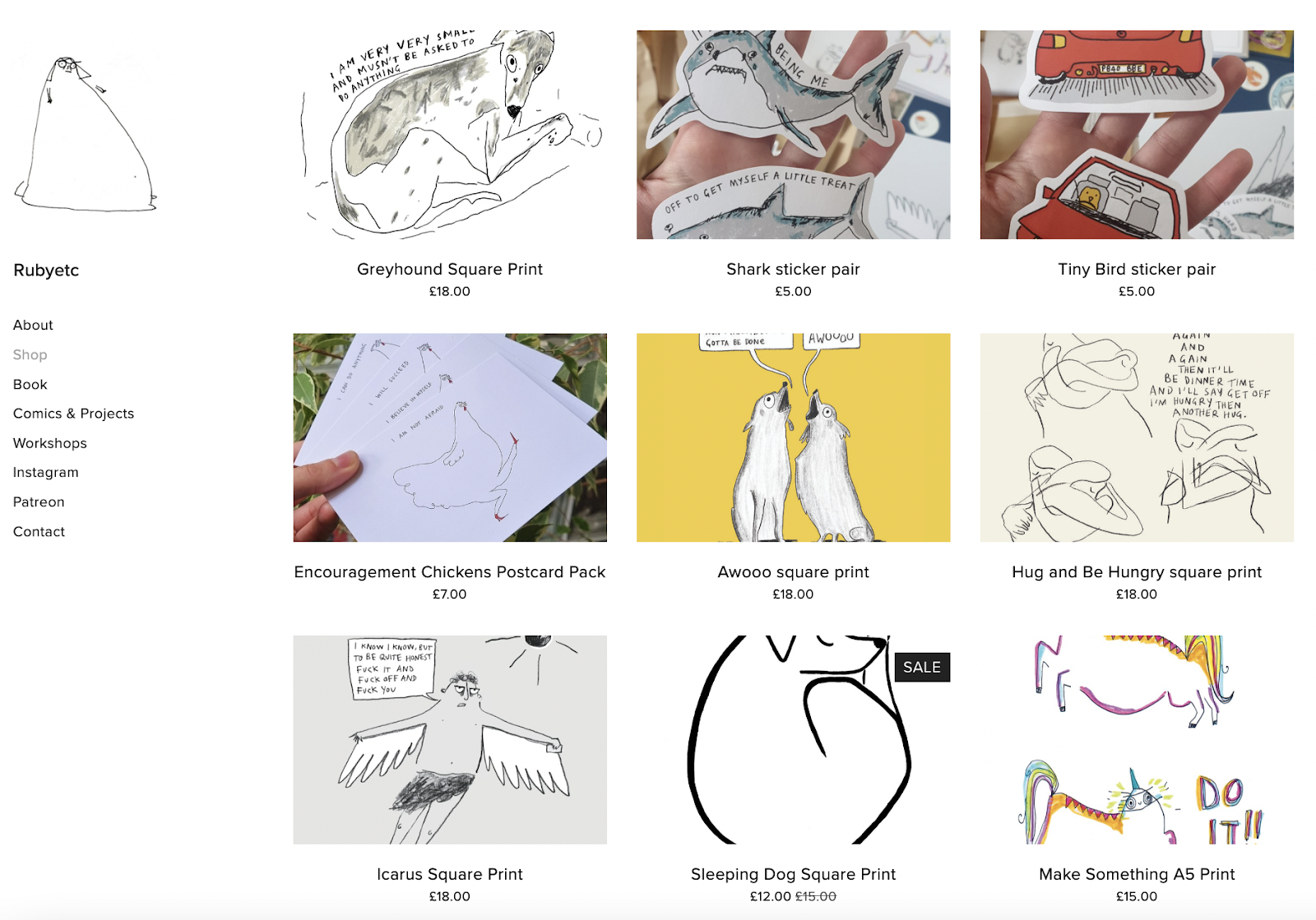
Here’s how you can get started selling downloadable art prints:
- Create your prints. It’s best to have a few pieces ready to go so customers can get a feel for your style and choose a design that suits their preferences.
- Resize your prints. Check the resolution of your digital art is good enough to download and print. If it’s not, resize your prints until the resolution is high enough that they won’t blur or pixelate when enlarged.
- Decide where to sell your prints. If you have one, upload your prints to art sites and your own website.
- Add titles and descriptions. Make sure you add descriptive titles to your prints so they’re easy to find in the search results.
Where to sell your digital art prints
The million dollar question: where should you sell your prints?
Lots of artists prefer uploading their artwork to print marketplaces like Etsy or ArtFinder. This takes away the hassle of managing your own website, but you also have less control over how your art is presented, plus you’re competing with hundreds of other artists on the same platform.
Alternatively, you can set up your own website using a platform like Shopify, Wix, or Squarespace. You then have the freedom to make your site look how you want it to and can implement strategies to increase your organic reach. Alternatively, you can create your own website and use a Whop checkout link. There are pros and cons to each option, but the choice comes down to how much time you have and your skill set.
2. Start a Print-on-Demand Store
Print-on-demand (POD) stores let customers buy different products decorated with your designs. You essentially store your prints online and then shoppers can choose what items they want to print on — a mug? A t-shirt? A tote bag?
There are ready-made POD stores (such as Printful or Printify) where you can upload your products, or you can create your own website to attract potential buyers.
Similarly to selling your digital art online, you just need to upload your designs which are then stored electronically. When someone purchases an item with your design on it, a third party will create the product and send it to the end customer. There’s very little effort involved on your part, but the rewards can be great if your designs become popular.
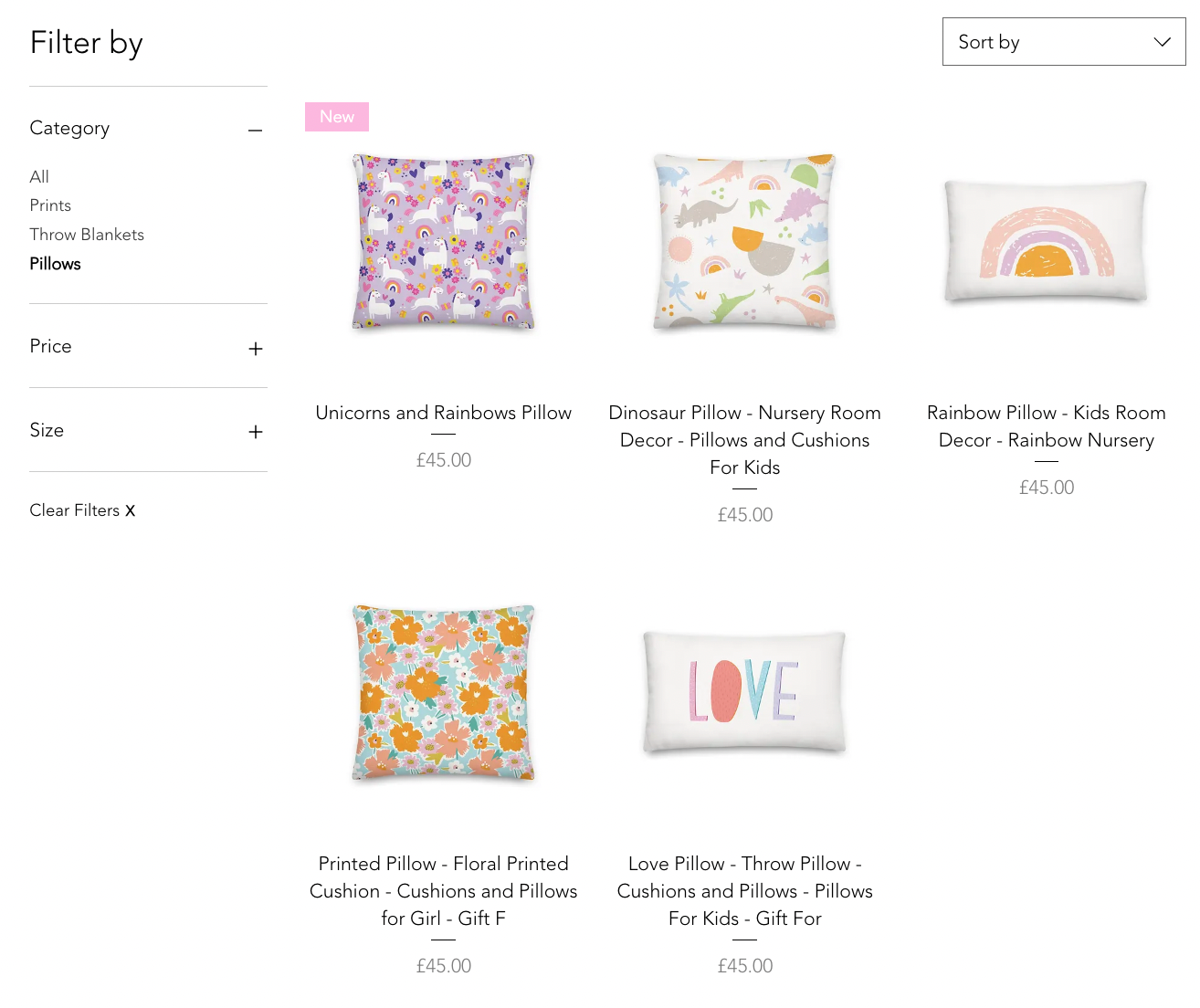
3. Start a YouTube Channel
Simply search “digital art” on YouTube and you’ll be inundated with videos about how to create digital art, tutorials that drill down into specific techniques, and behind-the-scenes footage of what it’s like to be a successful digital artist.
The great thing about YouTube is it's free to join. And, as a visual platform, it lends itself perfectly to digital art in all shapes and sizes. There are a few ways you can monetize your art on YouTube:
- Earn from paid subscribers. If you have a high enough follow count, you can make money every time a paid subscriber watches your videos.
- Build an audience. Plenty of people use YouTube as a search channel, which means it’s a great platform for building an audience that you can direct to your digital print store or other products.
- Affiliate marketing. Share your favorite art products with an affiliate link to earn a chunk of commission every time someone buys through your link.
- Partnerships. Join forces with art brands to promote their products and services to your audience in exchange for a fee.
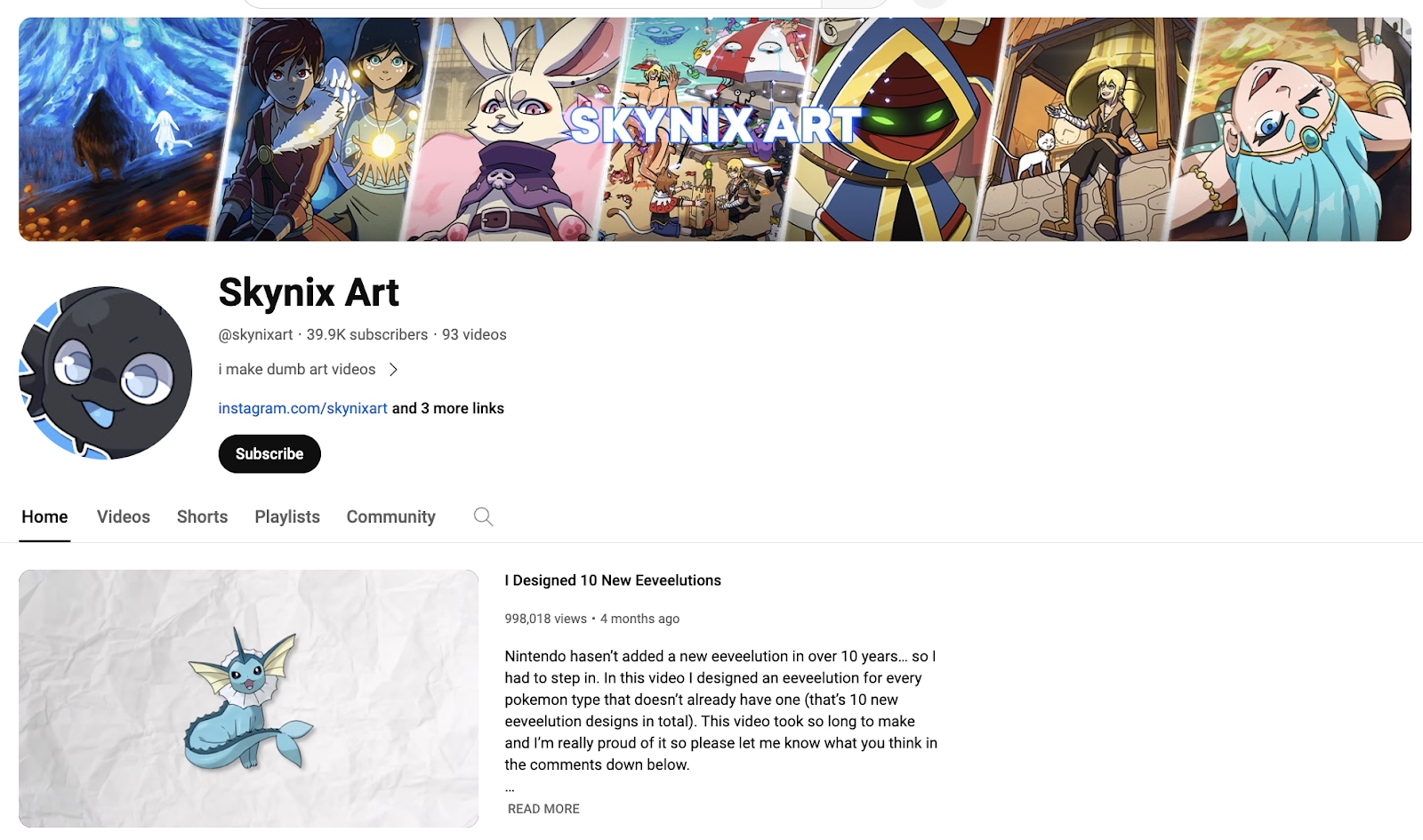
4. Create a Paid Community
Platforms like Discord and Telegram are ideally positioned for building a tight-knit creative community. You can charge members a monthly fee in exchange for exclusive content, like monthly tutorials or a behind-the-scenes look at how you make your art.
The great thing about communities is they can evolve with you. Having a bunch of loyal fans is a great foundation for selling your art and making sales — you can even experiment with different products to see what works best for your audience.
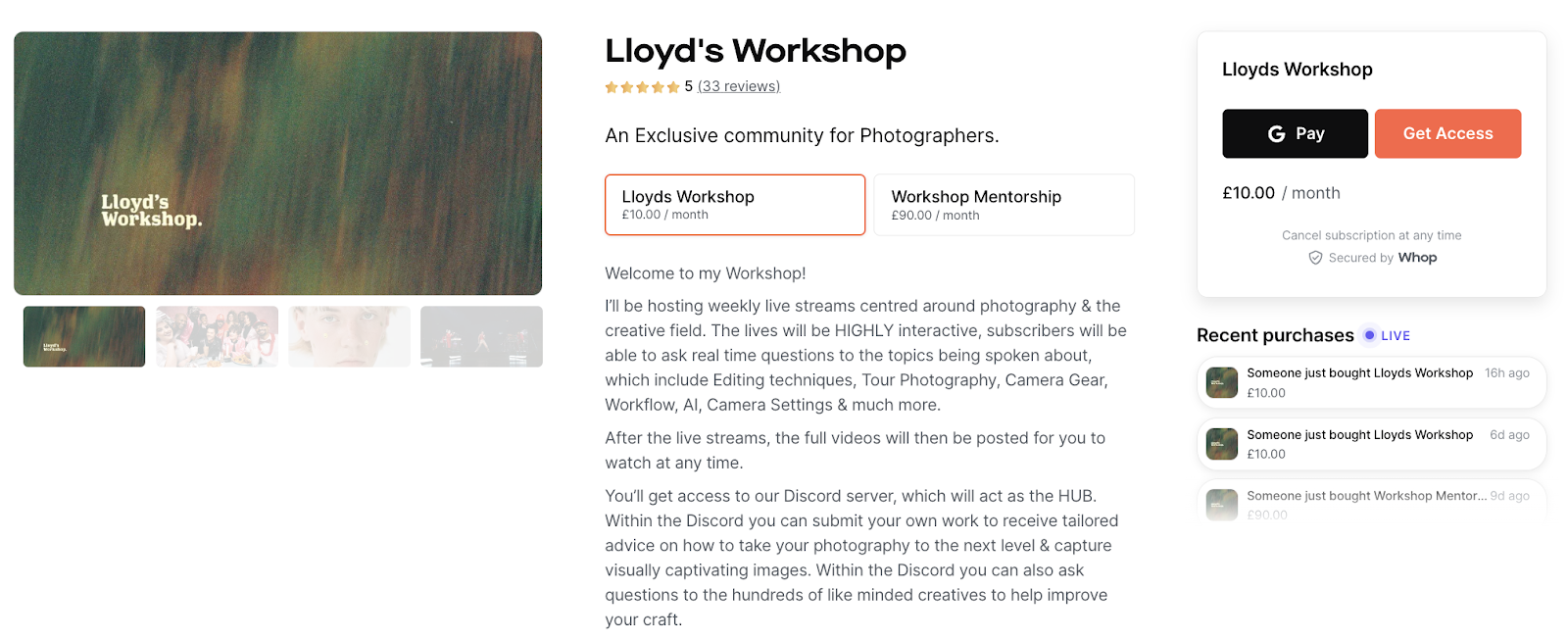
5. Set Up a Whop, Patreon, or Buy Me a Coffee
Similarly to Discord and Telegram, Whop and Patreon help you to connect with your audience. Your fans can pay you a one-off fee or invest in monthly payments in exchange for artwork or other perks that only members can claim.
Whop empowers creators to sell almost anything, including art, through their digital marketplace. With Whop, you can monetize your audience by selling access to private Telegram and Discord communities. Plus, you can sell any other digital artworks - like downloadables, tutorials, templates - from the same Whop storefront. The platform has already sold more than 4.9 million memberships, accounting for over $258 million worth of products, and that figure is increasing every day.
Patreon also allows creators to sell memberships as a way to connect with fans. It has expanded its features over the years to include digital shops and ad-based revenue streams.
Alternatively, you can opt for a “tipping” tool like Buy Me a Coffee, which lets people drop you a tip if they like your work. This collects one-off payments and comes without the pressure of creating monthly content for your patrons.
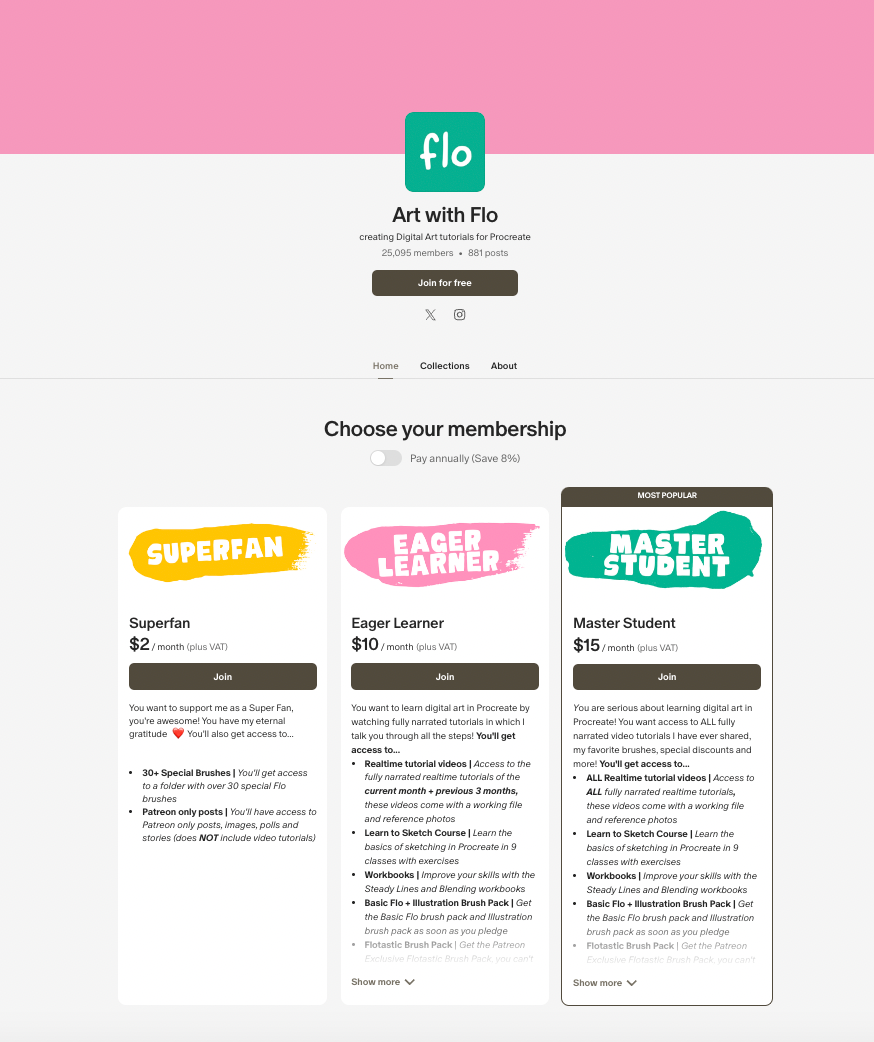
6. Create art courses
Why not share your digital art skills through an online course? You can teach a specific art technique or create a comprehensive course about getting started as a digital artist. The possibilities are endless. How about a video course about your signature collage technique or an ongoing masterclass that teaches people the basics of creating digital art?
Creating an art course can be an investment up front, but once it’s set up you can sell it over and over again.
Here are some steps to get started:
- Decide what to teach. Pick your topic — think about skills you’re good at, a particular technique, or something complex you can break down into digestible lessons.
- Plan and create your course. Decide how you’re going to present your course. Will you share video lessons, step-by-step tutorials, and accompanying downloadable workbooks? There’s a good chance you’ll teach a practical skill, which lends itself to videos and interactive assignments.
- Pick your platform. Choose where you’ll host your course. Sites like Whop, Teachable, and Podia all make it easy to create a course, upload your content, and make sales.
- Promote your course. Once your course is live, it’s time to find students. Use your existing social media channels to get sign-ups or add it to a marketplace like Whop where people can search for courses like yours.
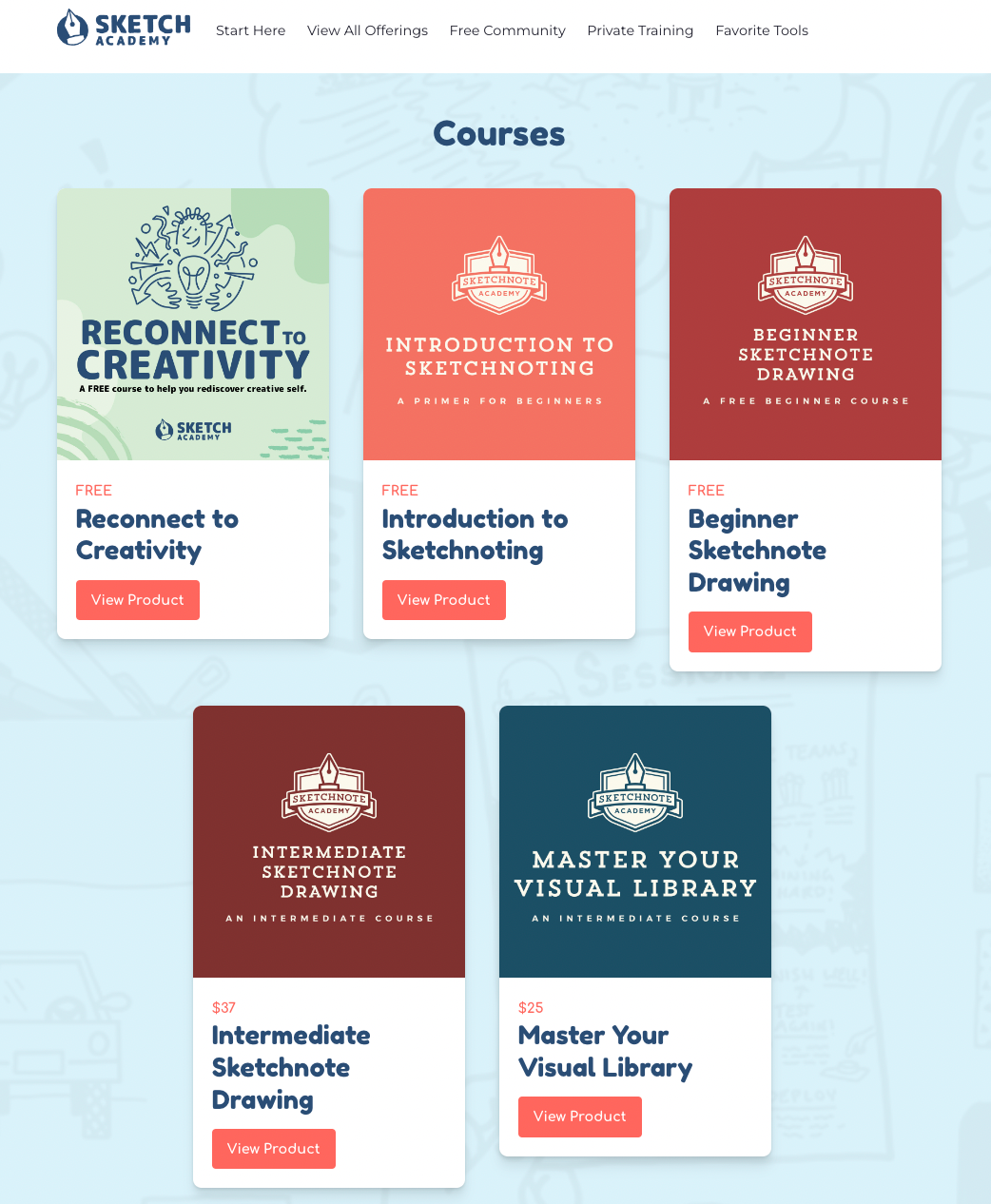
7. Run live workshops
If you’d rather interact with your students in real time, you can put on live workshops where you teach a skill or technique. This works well if you have a specific method you use that other people find interesting, like a unique way you create art on Photoshop or a special way you edit photographs.
There’s less investment upfront as well. You can advertise your workshop, drum up interest, and then share your skill over an hour or two. If you like, you can record the session too and sell it for a small fee after the live workshop.
The premise for running a workshop is similar to creating a course:
- Choose your topic. Decide what you’re going to teach in the workshop. Bear in mind you’ll have a limited time frame to teach, so ensure you’ll be able to cover everything you want to.
- Pick your platform. Choose where people will watch the workshop — you can do a Live on YouTube, use Zoom, or even something as simple as Google Meet.
- Promote your workshop. Let potential attendees know by sharing your workshop on social media and email list.

8. Stream your creative process
Similarly to running workshops, you can take a more hands-off approach and stream yourself creating a piece of art. You can let people watch you live as you go through your creative process, field questions, and share your unique tips and tricks. While you’re live, you can encourage viewers to send monetary tips or ask them to sign up for a course or a paid membership.
Alternatively, you live stream art events and fairs you attend to give viewers a behind-the-scenes look at what it’s like to be a digital artist.
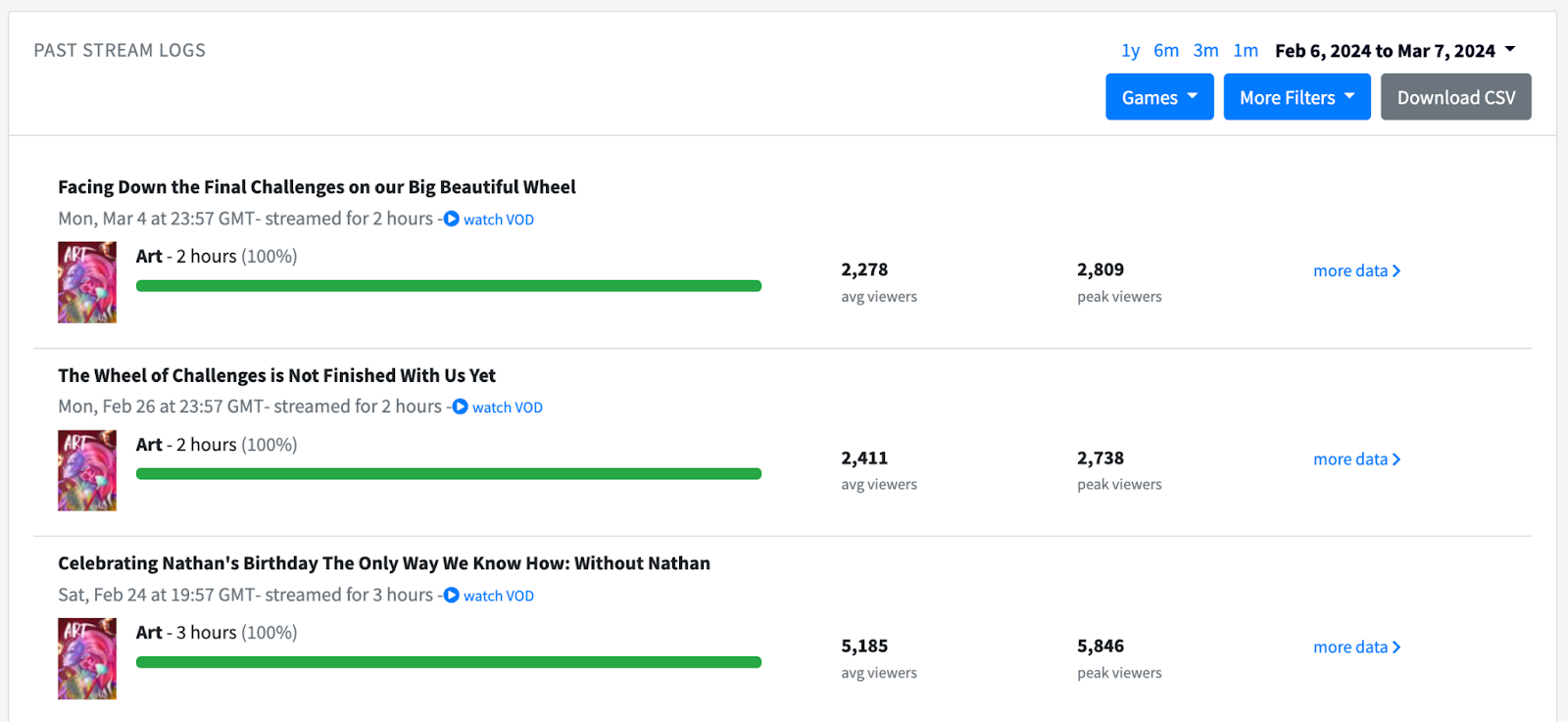
9. Coach budding artists
If you prefer to teach people one-on-one, you could try coaching budding artists who are just starting. You can walk them through a specific process or coach them through building a digital art business.
Coaching is much less effort than creating an entire course or promoting a workshop because you just need to sign a handful of people to make some money. However, you’ll need to be comfortable interacting with people and helping them reach their goals.
You can sell coaching packages on your website, you just need to decide how you’ll host the sessions. Something like Zoom or Google Meet should suffice — you just need somewhere to meet people and talk “face-to-face” in a digital setting.

10. Sell desktop and mobile wallpapers and backgrounds
You can also sell premade wallpapers and backgrounds for people’s phones and desktops. If you’re a dab hand at creating beautiful patterns and designs, you can create a few options and sell them on a marketplace.
The best part about this way to make money as a digital artist is it’s easy to get started. All you need to do is put together a few designs, make sure they’re the correct dimensions for different devices, and upload them to a design marketplace or your own website.
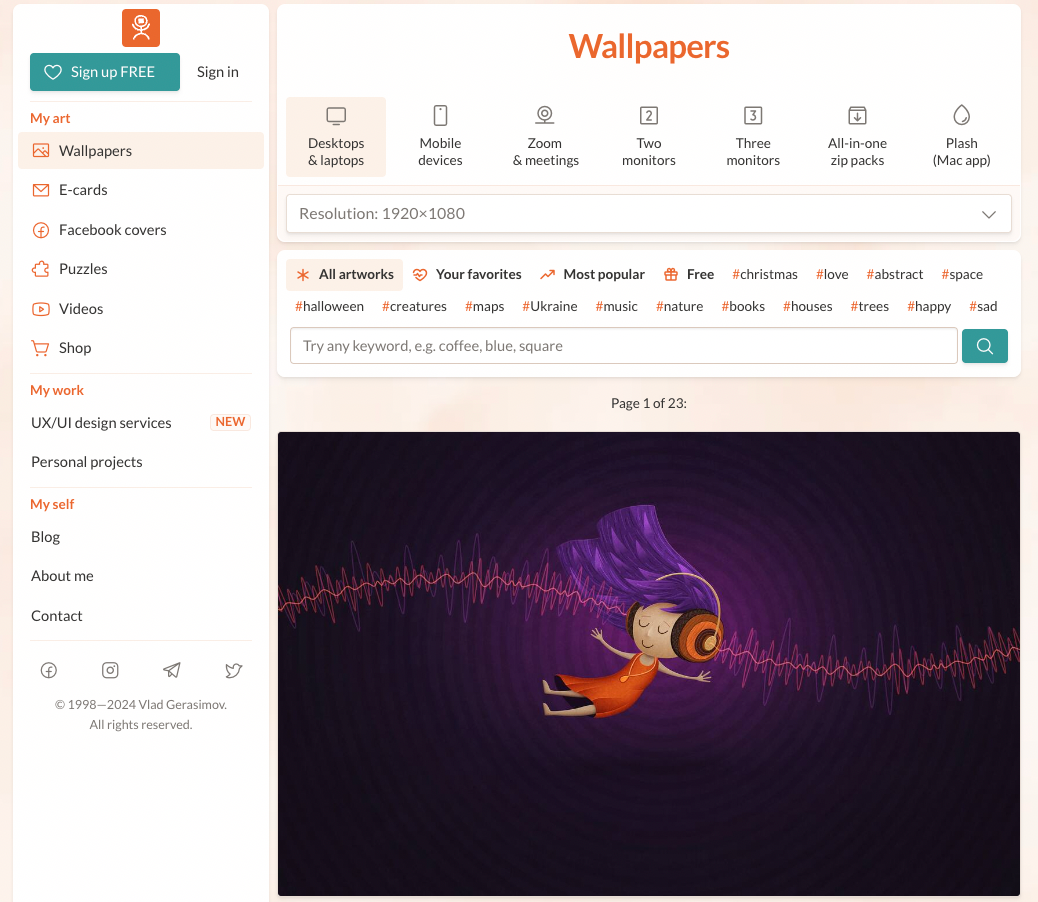
11. Create web fonts
If typography and fonts are more your thing, why not create web fonts and sell them on font marketplaces like 1000 Fonts or DaFont? People can then pay a one-off fee for your fonts and use them in their own designs. You can set two price points for web fonts:
- Personal use
- Commercial use
People will pay more for commercial use, as that means they can use your fonts in their money-making activities.

12. Sell guides and templates
Creating guides and templates that cover specific art skills or techniques can be a great earner. This might be a step-by-step guide to a specific process or a set of Photoshop brushes or branding document templates. Once you’ve put the guides and templates together, you can sell them on repeat to a huge customer base.
Similarly to courses, there’s some upfront work involved in creating guides and templates, but once they’re made and uploaded to your chosen platform, you can basically forget about them. The great part is, that you can create a guide for pretty much anything.
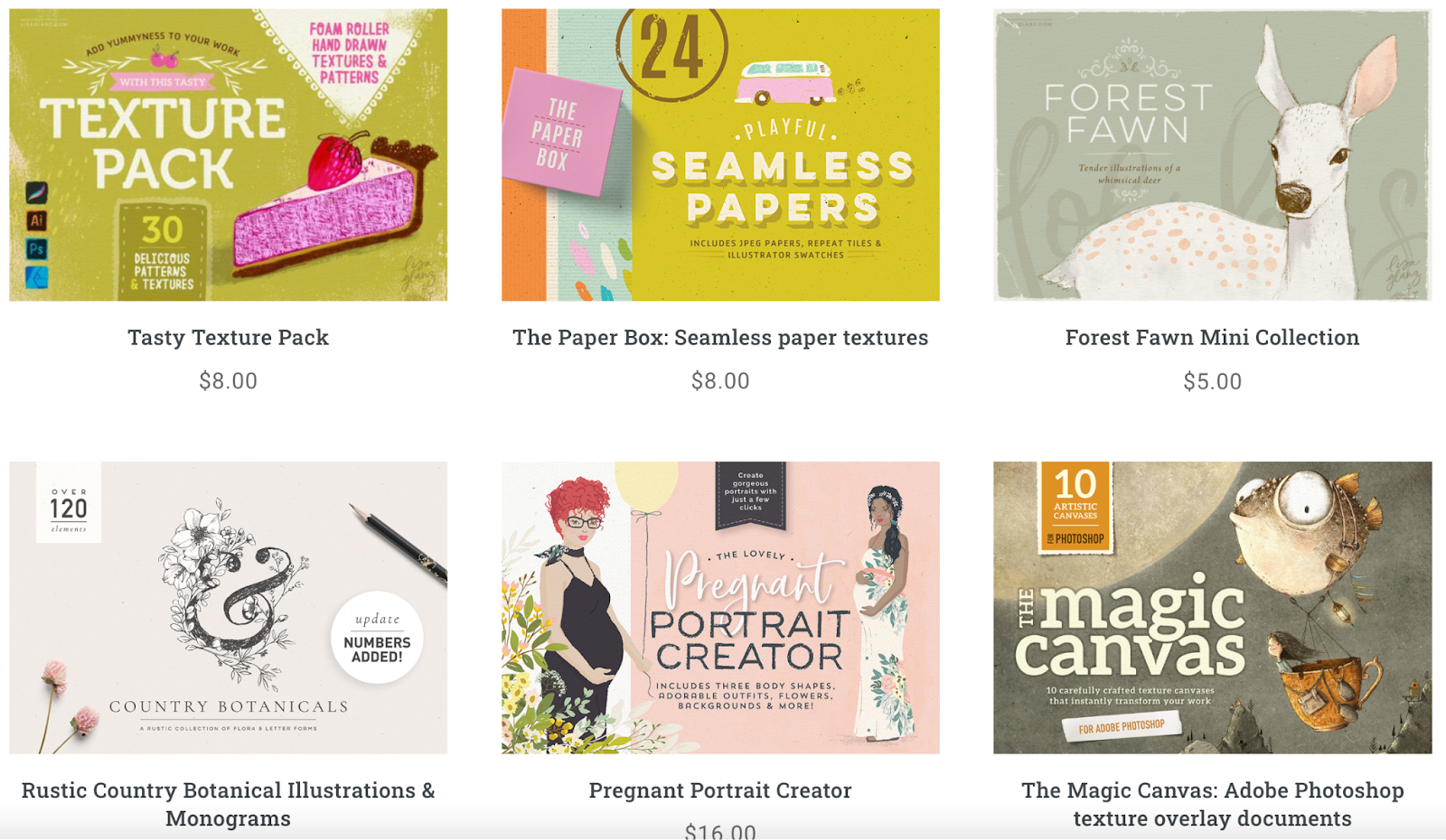
13. License your art to companies
Licensing your art and selling it to companies is a lesser-known way for digital artists to make money. The idea is that you create designs, patterns, illustrations, or whatever your specialty is, and then sell those ideas to companies that can use them on their products. It’s essentially renting out your artwork in exchange for a one-off or monthly licensing fee. Sometimes, you can earn royalties when your art is used, whether that’s on a t-shirt, a mug, or a tote bag.
There are a few things to bear in mind:
- Check the legalities of licensing your work and make sure you have a written agreement in place with the clients you loan your artwork to.
- The more artwork you have to license, the more money you’ll make as clients will have more options to choose from. It helps to have a diverse selection of styles so you can appeal to different companies.
14. Sell your art on stock websites
If you’re a keen photographer or illustrator, you can upload your artwork to stock websites in exchange for a one-off fee every time someone uses them. Like web fonts, there are two payment tiers on stock sites — one for commercial use and another for personal use.
Platforms like Getty Imagines and Shutterstock pay artists for each download and, if you have a lot of images or pieces under your belt, it can be a great passive earner.

How to Be a Profitable Digital Artist
As you can see, there are plenty of ways you can make money as a digital artist. But, if you want to set yourself up for success and be as profitable as possible, make a note of these tips and best practices.
1. Join art communities
Surrounding yourself with other successful digital artists is a great way to see what works and what doesn’t. Look for communities to get involved in, whether that’s on Slack, social media, or Discord. Most importantly, get involved. Share your products, ask questions, and make connections — you never know what might come of it.
Community is everything in the online world. As well as joining existing communities, why not start your own too? Building relationships with other artists and potential customers is a great way to grow your reach and get your name out there. The more people who know who you are, the easier it becomes to sell new products and make money.
2. Work on your branding and marketing
How do you want people to remember you? You can mold people’s perception of your digital art products by creating a stand-out brand that reflects you, your processes, and the products you sell.
How to create a brand for your digital art:
- Design your visual assets. Create a logo and choose a color scheme. Your visual branding will ensure people recognize you and your products when they see them in the wild.
- Identify your personality. Do you want to be seen as fun, serious, or somewhere in between? Your brand personality will determine how you show up online, including how you speak to your audience and sell your work.
- Choose your audience. Finally, decide who you want your customers to be. Getting specific here will help you get your messaging right and create relevant products.
Once you’ve got a brand in place, you can start marketing your digital art products. This will increase your visibility and generate sales — but it’s important to find a method that works for you. While some digital artists will find success on social media, others might do better on marketplaces or by attracting organic visitors with SEO.
It’s worth trying out a few different marketing strategies to see what works best for your business and audience.
Here are some ideas to get you started:
- Social media. Share your products on Instagram, TikTok, YouTube, Threads, and any other platforms where your audience is already hanging out.
- Email marketing. Grow an email list of loyal followers by offering a first-time buyer discount or another incentive. Once people are on your list, you can send them regular emails to stay front of mind.
- Search engine optimization. Insert relevant keywords on your website and implement Google’s best practices to improve your search engine rankings and attract organic visitors.
- Partnerships. Team up with other artists or relevant brands to cross-promote each other’s products and services.
- Influencer marketing. Hire a big name in your industry to share your products with their audience to kickstart growth.
3. Increase your visibility on social media
According to Statista, Instagram is the social media platform most commonly used by art buyers. If you’re not already sharing your artwork on Instagram, TikTok, and other visual social media channels, now’s the time to start.
Here are some ways you can get more eyeballs on your products:
- Use relevant hashtags. Explore trending hashtags in your niche and add them to your posts.
- Create short videos. Short-form videos perform really well on social media and are a great way to build connections with your audience.
- Collaborate. Join forces with other creators to get exposure to their audiences.
- Share useful content. People use social media to learn, find entertainment, and connect with brands. Post content that helps your audience solve a problem or that’s fun to watch.
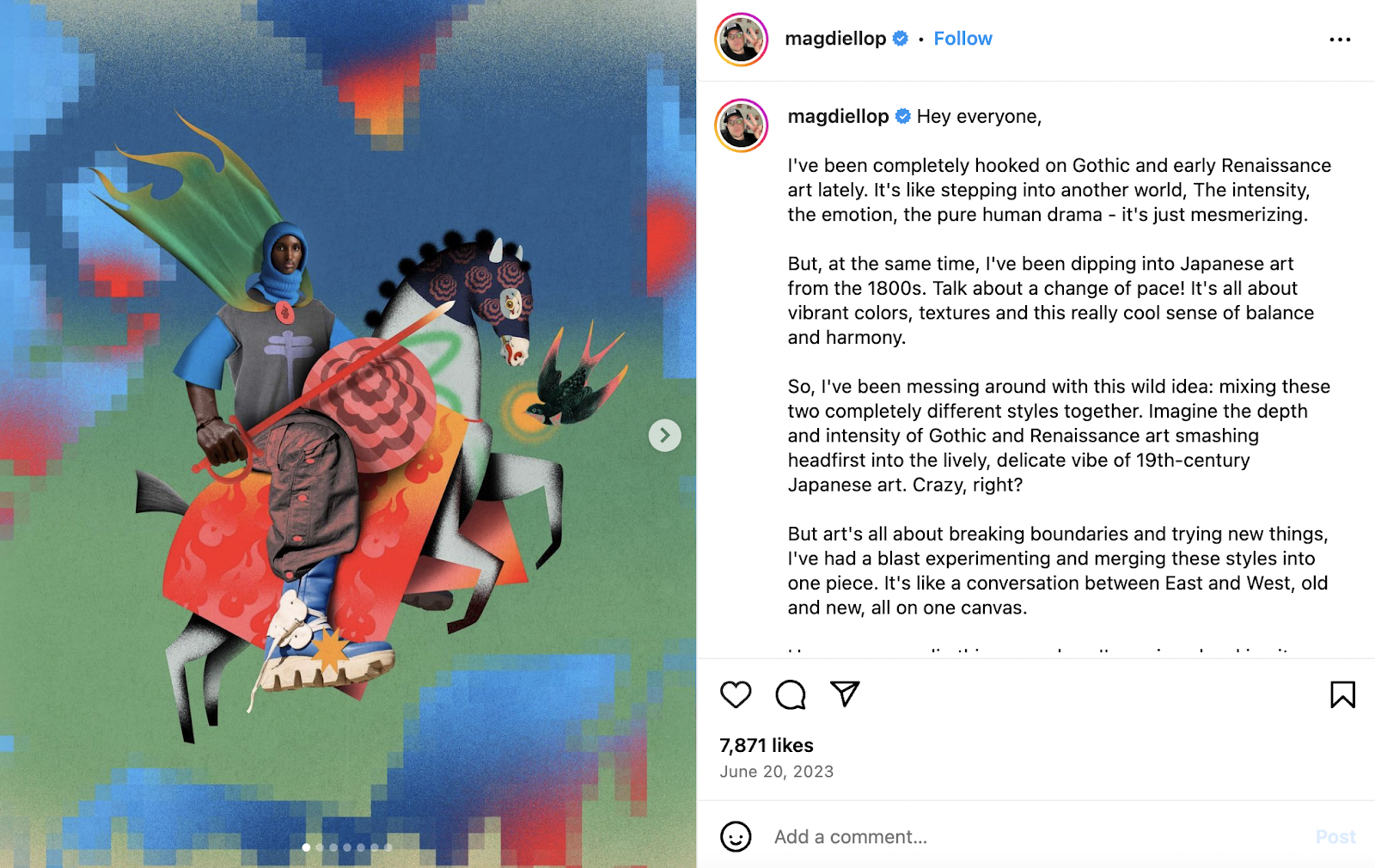
4. Get more reach on marketplaces like Whop
If building an audience from scratch sounds like hard work, you can lean on the existing user base of marketplaces like Whop. By uploading your digital products, you’ll automatically join a library of other digital creators who are sharing their products online.
Users can then search for products like yours and find them all in one place. It’s less work for you and for your customers.
When listing your products, remember to:
- Use descriptive titles. Let people know exactly what it is you’re selling by using relevant keywords in your product titles.
- Create eye-catching visuals. Make your listings stand out with high-quality visuals that reflect the quality of your products.
- Tell people what they can expect. Let users know what they can expect when they buy your products to remove any last-minute hesitations.
5. Use the right tools to manage your business
Creating products, building your brand, and marketing yourself can be hard if you’re doing it all by yourself — which there’s a good chance you are if you’re just starting out. Luckily, there are lots of tools you can use to help speed up your process and take some pressure off.
The easiest way to do this is to choose a tool that does everything you need so you don’t have to juggle multiple tools for multiple activities.
Whop was made with digital creators in mind and has a suite of features specifically geared for small business owners like digital artists.
Here are some of the perks you can enjoy when you sign up:
- Email marketing. Send well-timed emails to your subscribers and customers to promote more sales.
- A storefront. Create a functional online store where you can house your communities, courses, links to downloads, and any other resources.
- Payment processing. Take payment via multiple methods from people all over the world in just a few clicks.
- Sales and customer metrics. A detailed dashboard shows you key information about your customers and your sales figures.
- Memberships and subscriptions. Set up recurring payments and host your exclusive events inside Whop.
- Manage disputes. Handle any objections or complaints directly through Whop’s dedicated disputes portal.
6. Check licensing laws
Make sure you’re up-to-date on your local licensing laws if you’re selling digital art like fonts and stock photos. Get an agreement in place to determine whether you’ll retain full copyright ownership and grant customers permission to use your art.
Your art licensing agreement should cover both personal use and commercial use (i.e. whether someone can use your art as a desktop wallpaper on their home computer or on a flyer to promote their business).
Become a Successful Digital Artist with Whop
As you can see, there are many different ways you can make money as a digital artist, but with Whop you don’t have to choose just one. Instead, you can easily create and manage several income streams at once to generate a consistent income.
As well as creating a Whop storefront as a home for your digital art, you can also:
- Sell access to a community where you can host livestreams and run workshops in gated, paid channels.
- Sell downloadables and prints.
- Sell software plugins.
- Create and sell courses and masterminds.
You can manage all of this within Whop.
And best of all you can manage all of the above within Whop itself. 3% transaction fee, access to a whole range of tools
Ready to start making money as a digital artist? Get access to a whole range of tools for just a 3% transaction fee!
FAQ
What does a digital artist do?
A digital artist creates artwork on a computer. The term can cover a number of different creative processes, from video game design and digital print design to someone who sells desktop wallpaper or web fonts.
Do digital artists make money?
Yes, digital artists can make money by selling their artwork online. They can also deliver courses, create membership programs, and stream their creative process to make money. The amount you can make from digital art varies greatly depending on your skills, experience, and your chosen revenue stream. Some digital artists can make up to $100,000 per piece, while others will be happy making $20 or $50 per piece.
Can I become a digital artist?
If you have a creative skill to share, you can become a digital artist. Start by identifying what you’re good at and practicing your skills. You can then decide how you want to sell your skill — selling digital prints? Hosting art courses? Creating desktop wallpapers?
Where can I sell my digital art online?
You can sell your digital art on your own website, marketplaces like Whop, or via social media. With Whop, you can create a storefront, upload your digital art products, set your prices, and start attracting potential customers straight away. When someone buys your digital art, you’ll receive payments directly into your chosen account.
How do you price digital art?
The price of digital art varies depending on the format and purpose. For example, someone selling a digital art print might sell it for far more than someone selling a replicable desktop wallpaper. When pricing your art, think about who your audience is, what your products will be used for, and what customers will get out of it.
What type of digital art sells best?
Some of the most popular types of digital art are web fonts, art prints, branding templates, and stock imagery. However, there are plenty of other ways you can make money as a digital artist, such as running art courses, hosting creative workshops, and creating a community or membership program.
